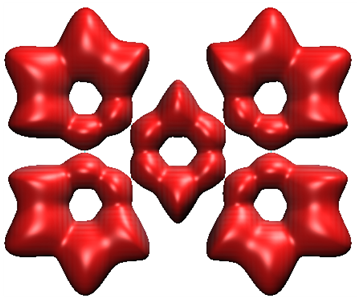On the Importance of Clar Structures of Polybenzenoid Hydrocarbons as Revealed by the π-Contribution to the Electron Localization Function

The degree of p-electron (de)localization and aromaticity of a series of polybenzenoid hydrocarbons (PBHs) has been analyzed through the π-contribution to the electron localization function (ELFπ), calculated at the B3LYP/6-311G(d,p) hybrid density functional theory level. The extent of p-electron delocalization in the various hexagons of a PBH was determined through analysis of the bifurcation values of the ELFp basins (BV(ELFp)), the spans in the bifurcation values in each hexagon (ΔBV(ELFπ)), and the ring-closure bifurcation values of the ELFπ (RCBV(ELFπ)). These computed results were compared to the qualitative description of local aromaticities of the different hexagons in terms of Clar structures with p-sextets. Benzene, [18]annulene, and thirty two PBHs were analyzed at their equilibrium geometries, and benzene and triphenylene were also analyzed at bond length distorted structures. In general, the description of PBHs in terms of Clar valence structures is supported by the ELFp properties, although there are exceptions. For PBHs at their equilibrium geometries there is a clear sigmoidal relationship between the CC bond lengths and the amount of p-electron (de)localization at these bonds, however, this relationship is lost for bond distorted geometries. In the latter cases, we specifically examined benzene in D3h symmetric “1,3,5-cyclohexatriene” structures and triphenylene in eight different structures. From the distorted benzenes and triphenylenes it becomes clear that there is a distinct tendency for the p-electron network to retain delocalization (aromaticity). The ELFp analysis thus reveals an antidistortive rather than a distortive behavior of the p-electrons in these investigated compounds.
